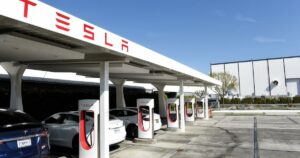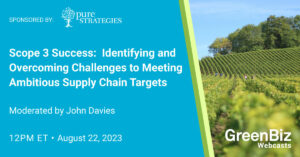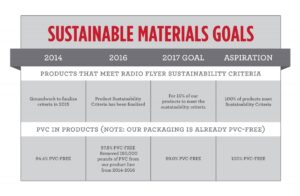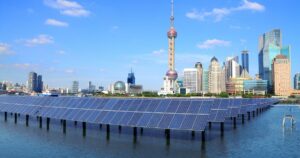
Everyone should be able to see themselves in the climate movement. This series from Drawdown Labs profiles people without “sustainability” in their job title who fold climate into their roles at their organization.
Companies are incredibly influential societal actors, with vast amounts of financial, political and social power. The private sector falls short in leveraging capital for the climate action we need today. Only one-fifth of the world’s 2,000 largest publicly traded companies have made net-zero commitments (not to mention that net zero often perpetuates the status quo and does not reduce emissions to actual zero) — far below the scale and pace of change demanded by the climate crisis.
A heartening sign: Concern around climate change is at an all-time high and Americans are increasingly bringing these concerns to the workplace, staging walkouts, presenting shareholder resolutions on climate, and placing sustainability above all else when deciding where to work. It’s clear that climate action is no longer limited to sustainability professionals.
This is a welcome direction, because every business operation has a climate impact — from the advertisements marketing teams produce and the materials designers use to develop products, to the cars and planes employees use to commute and travel. Employees are leading on climate action, bringing their companies’ customers and clients along for the climate journey.
Insetting impact
Employees across sectors are finding ways to weave climate action into their roles as marketers, program managers, restaurant owners, designers and more — merging their climate purpose with their seemingly unrelated day jobs. Kate Herbert, senior brand experience manager for Snack Bars at General Mills, calls this idea “insetting.” Business leaders who want to make a difference often think that they need to invest in an external initiative because their own team or company doesn’t focus on climate, when in reality, they “have all the agency in the world at their fingertips to ‘inset’ impact” into their own, core work.
And when people such as Kate take an active role in ensuring their job responsibilities involve climate considerations, the impact goes far beyond the business itself and radiates out to its customers. Kate helps deliver General Mills’ climate and regenerative agriculture commitments through purpose-driven branding and deep understanding of consumer needs. But through her work, she’s actually found that many people don’t associate their own food choices with climate change — when in reality, household decisions on food consumption have the potential to account for over 12 percent of global emissions reductions needed to avoid dangerous climate change.
“Consciousness creates a sense of responsibility,” notes Kate, who says she is actively working to ensure consumers are equipped with the climate knowledge needed to make more sustainable purchasing decisions. When that story is told, it can encourage consumers to change their behavior and replace their regular purchases, such as cereal, with more climate-friendly food options; Kate has seen an increase in sales when products showcase on their packaging how General Mills is advancing climate action in agriculture.
“It’s not only about meeting people where they are, but it’s about leading them where they should be going,” she says. Companies need to put in the actual, on-the-ground work of leading on climate, but then they also need to bring their consumers along with them to catalyze industry-wide changes.
The business case for climate
For others, it’s less about surfacing something new for customers, but rather about “finding ways to translate things,” notes Mike Sakowski, senior business design lead at the global design firm IDEO. Mike helps translate climate solutions into a currency that businesses will understand — business value, innovation and, of course, literal currency. Businesses, as we know, hold a lot of power, making Mike’s job and his interest in climate particularly important. By winning with a few key players, he observes, “we push the rest of the system to go faster.”
“I think the people for whom the moral and ethical arguments are resonating, they’re already well on their way … but there is a very large, very real cohort of organizations that might want to do the right thing, but they just can’t square that with their business model, and there are very real business pressures they’re trying to navigate.”
By speaking the same language, Mike says he can make the business case for climate action, highlighting the ways climate considerations (even if complicated) can improve business operations every step of the way. When businesses take on climate action, they undoubtedly benefit in many ways: they bring in more investments, attract and keep talent and secure their operations for the-long term from climate-related risks.
While Mike is an expert in business design, all employees can play the role of translator across job functions, interpreting climate solutions for their own job and company. “Folks [shouldn’t] be afraid to raise their hand and say, ‘Actually, I know some things, and let me bring it to the cause,’” Mike emboldens everyone to use their unique contribution within their company to be the starting point for workplace climate action.
Happy customers, happy climate
Kate and Mike show two important results of prioritizing climate at work: making products and offerings simultaneously better for the planet and customers; and leveraging companies’ platforms to positively influence the thousands, if not millions, of customers and clients that use their products and services. When a brand expert tells a climate story to consumers, or a designer integrates climate considerations in the creative process for clients, they are ultimately seeding change outside their companies. And, as Mike shares, it’s not about telling customers what to do — it’s about inspiring them by illuminating the possibilities and the tangible paths to get there.
Whoever a company’s customers or clients are, they’re likely open to hearing about new tools and information around sustainability — if a brand can prove expertise. Imagine if every item on the shelf or every service offered was inherently climate-friendly. Employees can use their unique roles to help make that a reality. When all skills and responsibilities for climate action — across teams and companies — are deployed, the private sector can help meet the climate crisis at the scale required.
2050, in their own words
2050 is a critical year for the climate crisis — it is the absolute latest year by which the world must reach net-zero emissions to stay below a warming increase of 1.5 degrees Celsius — the goal of the Paris Agreement. When asked to envision that year, both Kate and Mike show their optimism for the road ahead.
Kate: I just believe in people! I believe there are so many smart, capable people that are working their butts off to help be part of the solution. And I really do believe that we’re going to see many different sectors taking on their responsibilities and stepping up to the plate.
Mike: Speaking for myself, I think the world will definitely be better in 2050, I hope to see power and prosperity distributed more equally. And I think storytelling has a really interesting place in bringing about that world, inspiring people to see the possibilities by showing them the tangible paths to get there.
Source: https://www.greenbiz.com/article/moving-customers-and-clients-toward-climate-action









